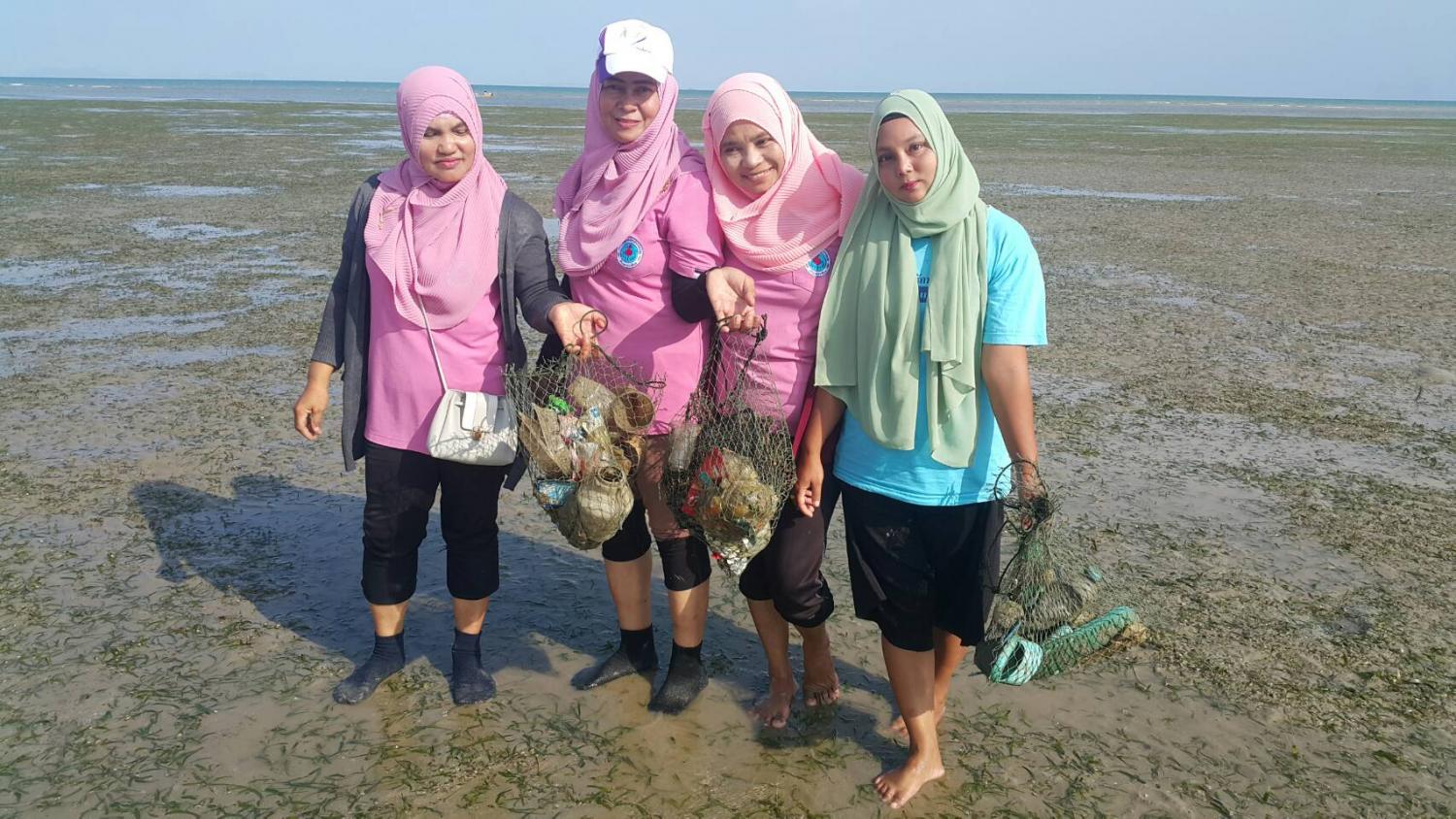
Koh Libong is one among over 550 islands in the Andaman Sea. Yet the island is known as the de facto capital city for dugongs.
Koh Libong, off Trang province, is one among three pristine marine sites in Thailand declared as an Asean Heritage Park at the 15th Asean Ministerial Meeting on the Environment in Cambodia's Siem Reap last week.
Of the 200 dugongs believed to be living in Thai waters, 180 now inhabit the sea around Koh Libong.
What makes Koh Libong the country's largest habitat of dugongs is the abundance of seagrass, their favourite food. The island has more than 12,000 rai of seagrass meadows.
Suthep Khanchai, a Libong native and founder of the Dugong Conservation group on the island said local villagers love and protect the dugongs. One of measures they undertake is taking care of the seagrass.
"Our island is like a capital city for the dugongs. Eleven out of 13 species of seagrasses in Thailand are found here," said Mr Suthep.
The status of dugong populations and the size of seagrass meadows in an area can be used as an indicator of general ecosystem health.
"Dugongs and seagrass depend on each other to survive. When dugongs graze on seagrass meadows, they stir up sediment, mixing it with their dung and that helps enrich the seabed. Meanwhile, seagrass meadows also provide a habitat and breeding ground for fish, which is the main source of food and income for people on the island. Everything is linked in a cycle, so saving dugongs means saving ourselves," he said.
In past years, Mr Suthep and local people on Koh Libong have joined hands with a research team from the Thailand Science Research and Innovation (TSRI) to study and find a sustainable way to conserve dugongs and seagrass sources.
Khanitta Junbon, a member of the TSRI research team, said the most commonly identified cause of dugong deaths are fishing equipment and collisions with boats.
"Most of the dugong carcasses we found were killed after getting trapped in fishing equipment. This is because their habitat is also fishing grounds and a water-navigation route," Ms Khanitta said.
She added the future of dugongs is worrying partly because their fertility rate is low.
"The pregnancy period of dugongs is long and females also nurture cubs for a long time, so the birth rate is very low. Also, we still cannot breed dugongs in captivity," Ms Khanitta said.
To protect dugongs and seagrass sources, local communities on Koh Libong have agreed to set up conservation special zones where the use of destructive fishing gear which causes dugong deaths is banned.
"It is important that we have a preservation zone for dugongs where fishing and navigation are limited, to save their lives," Ms Khanitta said.
A group of volunteers also helps monitor areas where there is a lot of seagrass.
An observation tower was also built on top of a mountain for volunteers to keep an eye on the habitat area. Despite the "dugong watch" becoming a popular tourism activity for the province, tourist boats are asked not to draw too close.
Although authorities and locals on Koh Libong have put a lot of effort into conserving dugongs in their habitats, every year dugong deaths are still reported.
The fatality rate of dugongs this year has sounded alarm bells for marine conservationists. In just nine months, 21 dugongs have died.
Among them was a famous orphaned baby dugong called Marium.
The orphaned dugong was found by marine biologists in April in southern Thailand and brought to Koh Libong. She became an internet sensation after her caretakers released videos of her nuzzling up to human babysitters.
Despite the intensive care she received on the island, Marium died several months later. A large amount of plastic waste was found in her intestine, which led to severe gastritis and blood infection.
"Marium's death reveals the awkward truth about the serious threat of plastic in the ocean and a reminder to all of us not to dispose of trash in the oceans," he said.
In the old days, everyone was on the lookout for destructive fishing gear as one of the key threats to dugongs.
Now, volunteers need to keep eyes on plastic bags that are often get stuck in seagrass.
"The marine debris is a major challenge that needs to be tackled as the nursery zone where Marium was cared for also contained plastic garbage," the governor added.
According to the Department of Marine and Coastal Resources, last year 129 marine endangered species in Thailand were injured or killed by sea garbage.
To improve the situation, Thailand recently announced the "Marium Project".
The Marium Project aims to increase the dugong population by 50% within a decade.
Initially, the project will be implemented first around Koh Libong, but it will later be expanded to 11 other dugong habitats with abundant seagrass growth -- including Phra Thong island, areas around the Prasae River delta and Bandon Bay.
Dugongs are now listed as one of 19 protected wild animals in Thailand, according to the Wild Animal Reservation and Protection Act.